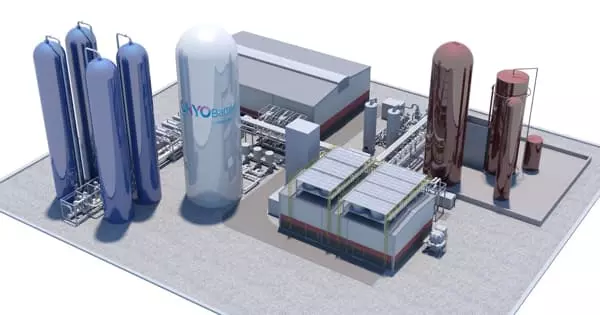Large-scale energy storage refers to a group of methods for storing energy on a large scale within an electrical power grid. When electricity is plentiful and inexpensive (especially from intermittent power sources such as wind power, tidal power, and solar power) or demand is low, electrical energy is stored and later returned to the grid when demand is high and electricity prices are higher. Dammed hydroelectricity will be the most common form of grid energy storage by 2020, with both conventional hydroelectric generation and pumped-storage hydroelectricity.
The Laboratory of Organic Electronics at Linköping University has developed a safe, low-cost, and long-term energy storage technology. It is based on two major breakthroughs: the production of rolled wood-based electrodes and a new type of water-based electrolyte.
The findings were published in the peer-reviewed journal Advanced Energy and Sustainability Research. The technology has been patented and will be commercialized by Ligna Energy AB, a Norrköping-based spin-off company that won the award for best “Startup for Climate” at the recent COP26 meeting in Glasgow.
Our findings enable safe, environmentally sustainable organic energy storage with a high power density of 5 kW/kg, where the electrodes are manufactured in a printing press from wood-based material. We must, however, increase the energy density: our organic batteries outperform standard supercapacitors and perform similarly to lead-acid batteries. But lithium-ion batteries are superior.
Professor Xavier Crispin
An increasing share of renewable energy in the energy mix, as well as increased electricity consumption in society, are posing significant challenges for balancing power supply networks. Electricity is consumed in principle at the point of generation, and there are currently few options for storing large amounts of electricity. The issue is especially acute during cold weather when the demand for electricity is highest. An imbalance in the grid can result in major power outages.
Engineers and policymakers are increasingly turning their attention to energy storage solutions in response to growing concerns about the environmental impacts of fossil fuels as well as the capacity and resilience of energy grids around the world. Indeed, energy storage can help address the intermittent nature of solar and wind power; in many cases, it can also respond quickly to large fluctuations in demand, making the grid more responsive and reducing the need to build back up power plants. The effectiveness of an energy storage facility is determined by how quickly it can respond to changes in demand, the rate of energy lost during the storage process, the overall energy storage capacity, and the speed with which it can be recharged.

Professor Xavier Crispin and his colleagues at Linköping University’s Laboratory of Organic Electronics have developed a concept for large-scale energy storage that is safe, cheap, and sustainable. The potential power output is sufficient for the technology to maintain a power balance in the electricity supply.
“Our findings enable safe, environmentally sustainable organic energy storage with a high power density of 5 kW/kg, where the electrodes are manufactured in a printing press from wood-based material. We must, however, increase the energy density: our organic batteries outperform standard supercapacitors and perform similarly to lead-acid batteries. But lithium-ion batteries are superior” says Xavier Crispin.
Previous attempts to develop a sustainable energy storage system based on inexpensive organic and water-based electrolytes with carbon-based electrodes have all failed due to rapid self-discharge: it has been difficult to achieve more than one day.
The excellent results presented in the article are based on two breakthroughs: a new type of water-based electrolyte and electrodes made from lignin, a readily available and inexpensive by-product of paper production. The researchers created a polyelectrolyte composed of a highly concentrated water-based polymer, potassium polyacrylate, as well as biopolymer lignin (as a positive electrode) and polyimide mixed with conductive carbon (as a negative electrode).
“The voltage drop, which measures self-discharge, is less than 0.5 V in 100 hours,” says Xavier Crispin, “which is a world record for energy storage with organic electrodes in water-based electrolytes.” Furthermore, the new technology makes use of low-cost raw materials: neither lignin, carbon, nor polyelectrolyte cost more than one dollar per kilogram. These are common and non-flammable materials, and the technology can be scaled up to large batteries. It is a long-term solution for large-scale, safe energy storage.
Energy storage can also help meet peak electricity demand, such as on hot summer days when air conditioners are blasting or at night when households turn on lights and electronics. Electricity becomes more expensive during peak hours because power plants must ramp up production to meet increased energy demand. Energy storage increases grid flexibility by allowing distributors to buy electricity during off-peak times when energy is cheap and sell it to the grid when it is in higher demand.
















